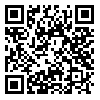Volume 18, Issue 2 (Summer 2023)
Salmand: Iranian Journal of Ageing 2023, 18(2): 218-233 |
Back to browse issues page
Download citation:
BibTeX | RIS | EndNote | Medlars | ProCite | Reference Manager | RefWorks
Send citation to:



BibTeX | RIS | EndNote | Medlars | ProCite | Reference Manager | RefWorks
Send citation to:
Farahbod M, Masoudi Asl I, Tabibi S J, Kamali M. The Status of Rehabilitation in Iran: Barriers and Facilitators. Salmand: Iranian Journal of Ageing 2023; 18 (2) :218-233
URL: http://salmandj.uswr.ac.ir/article-1-2573-en.html
URL: http://salmandj.uswr.ac.ir/article-1-2573-en.html
1- Department of Health Services Management, Faculty of Science and Technology, Science and Research Branch, Islamic Azad University, Tehran, Iran.
2- Department of Health Services Management, School of Health Management and Information Sciences, Iran University of Medical Sciences, Tehran, Iran . , masoudi_1352@yahoo.com
3- Department of Basic Sciences of Rehabilitation, Rehabilitation Research Center, School of Rehabilitation Sciences, Iran University of Medical Sciences, Tehran, Iran.
2- Department of Health Services Management, School of Health Management and Information Sciences, Iran University of Medical Sciences, Tehran, Iran . , masoudi_1352@yahoo.com
3- Department of Basic Sciences of Rehabilitation, Rehabilitation Research Center, School of Rehabilitation Sciences, Iran University of Medical Sciences, Tehran, Iran.
Abstract: (1301 Views)
Objectives Rehabilitation is one of the basic services for the elderly and people with disabilities and provides the possibility of equal opportunities and participation in the society. In fact, it is one of the main pillars of the health; however, less attention has been paid to this issue in Iran, and it does not have a specific place in the health system. The present study aims to find barriers and facilitators regarding rehabilitation programs for the elderly and people with disabilities in Iran.
Methods & Materials This is a qualitative study using content analysis method. Participants were 13 experts in different fields of rehabilitation who were selected using a purposive sampling method which continued until the data saturation. The data were collected using a semi-structured in-depth interview from February 2021 to February 2022. The interviews were transcribed verbatim, and then were analyzed by using conventional content analysis method and using constant comparative analysis.
Results Two main categories of barriers and facilitators, each with 4 sub-categories were identified. The barriers were: High number of rehabilitation trustees, lack of awareness of officials and people, lack of attention to the role of the municipality in rehabilitation, and poor rehabilitation management. Facilitators were: Building culture in the field of rehabilitation and disability, improving the insight of officials, the role of rehabilitation specialists, benefiting from the experiences of other countries
Conclusion The identified barriers and facilitators can help officials and policymakers in Iran to improve the status of rehabilitation and provide better services to people with disabilities.
Coresponding author: Iravan Masoudi Asl, E-mail: masoudi_1352@yahoo.com
You can also search for this author in: PubMed, Google Scholar
Methods & Materials This is a qualitative study using content analysis method. Participants were 13 experts in different fields of rehabilitation who were selected using a purposive sampling method which continued until the data saturation. The data were collected using a semi-structured in-depth interview from February 2021 to February 2022. The interviews were transcribed verbatim, and then were analyzed by using conventional content analysis method and using constant comparative analysis.
Results Two main categories of barriers and facilitators, each with 4 sub-categories were identified. The barriers were: High number of rehabilitation trustees, lack of awareness of officials and people, lack of attention to the role of the municipality in rehabilitation, and poor rehabilitation management. Facilitators were: Building culture in the field of rehabilitation and disability, improving the insight of officials, the role of rehabilitation specialists, benefiting from the experiences of other countries
Conclusion The identified barriers and facilitators can help officials and policymakers in Iran to improve the status of rehabilitation and provide better services to people with disabilities.
Coresponding author: Iravan Masoudi Asl, E-mail: masoudi_1352@yahoo.com
You can also search for this author in: PubMed, Google Scholar
Type of Study: Research |
Subject:
Rehabilitation Management
Received: 2023/01/29 | Accepted: 2023/02/15 | Published: 2023/07/01
Received: 2023/01/29 | Accepted: 2023/02/15 | Published: 2023/07/01
Send email to the article author
| Rights and permissions | |
 |
This work is licensed under a Creative Commons Attribution-NonCommercial 4.0 International License. |








